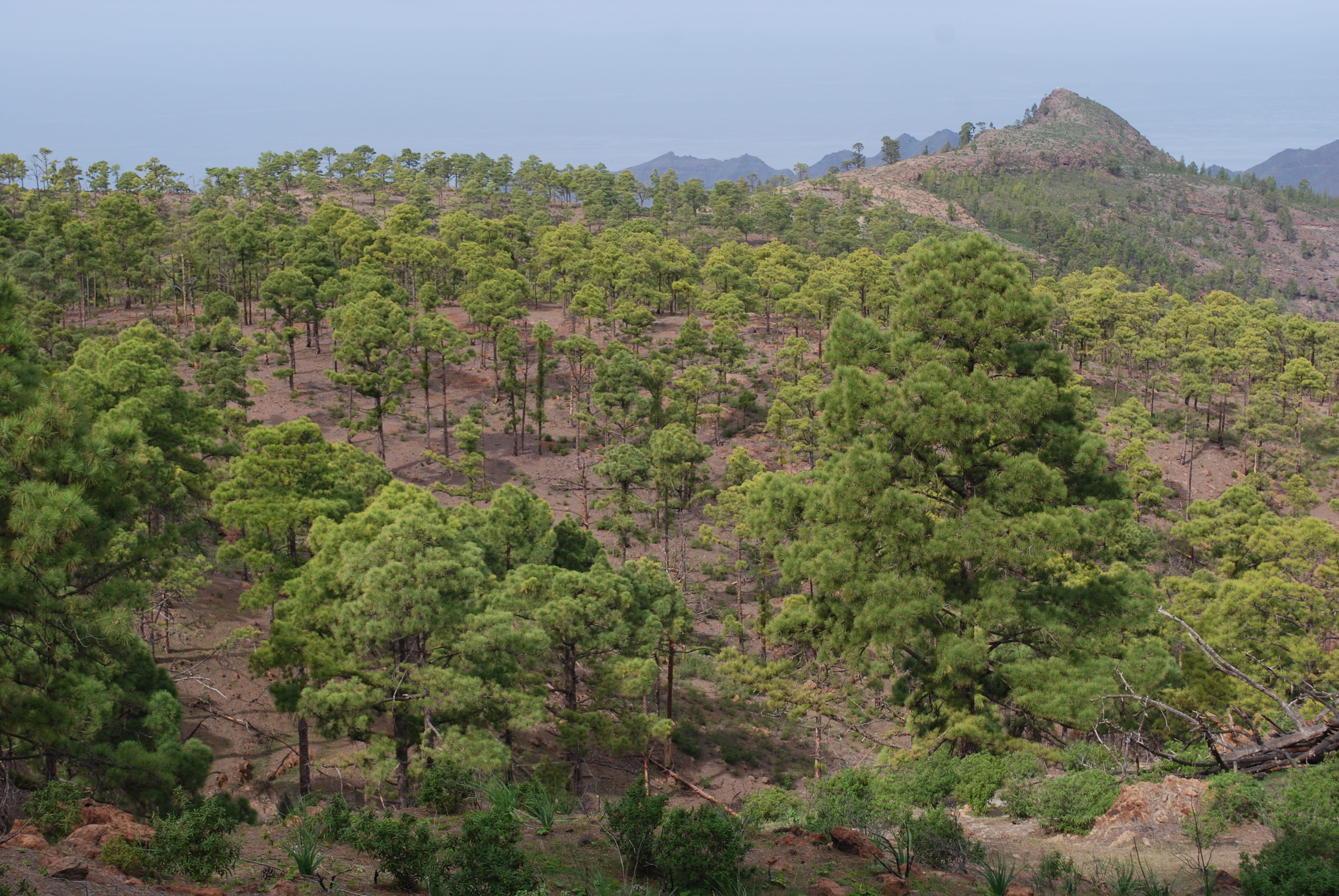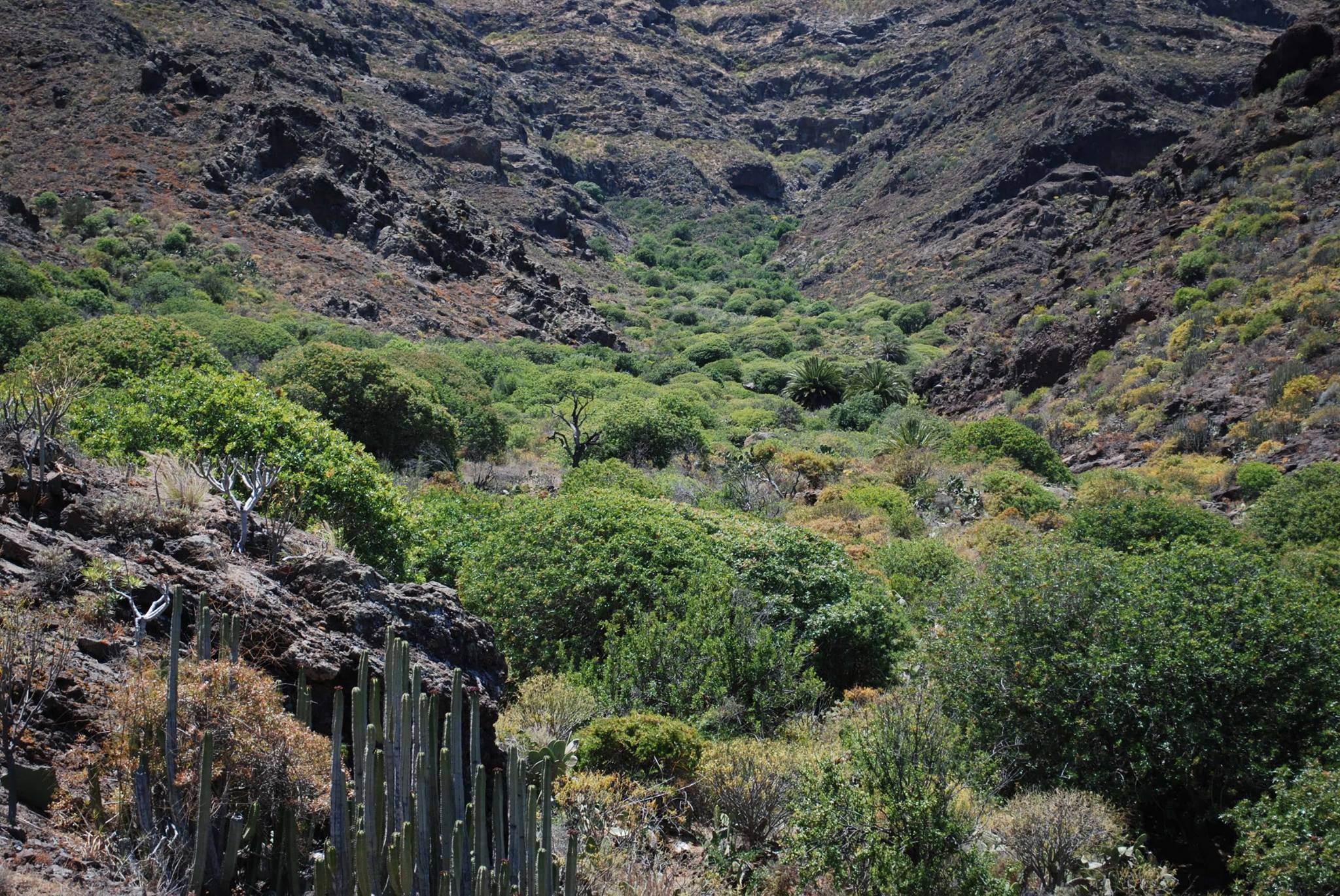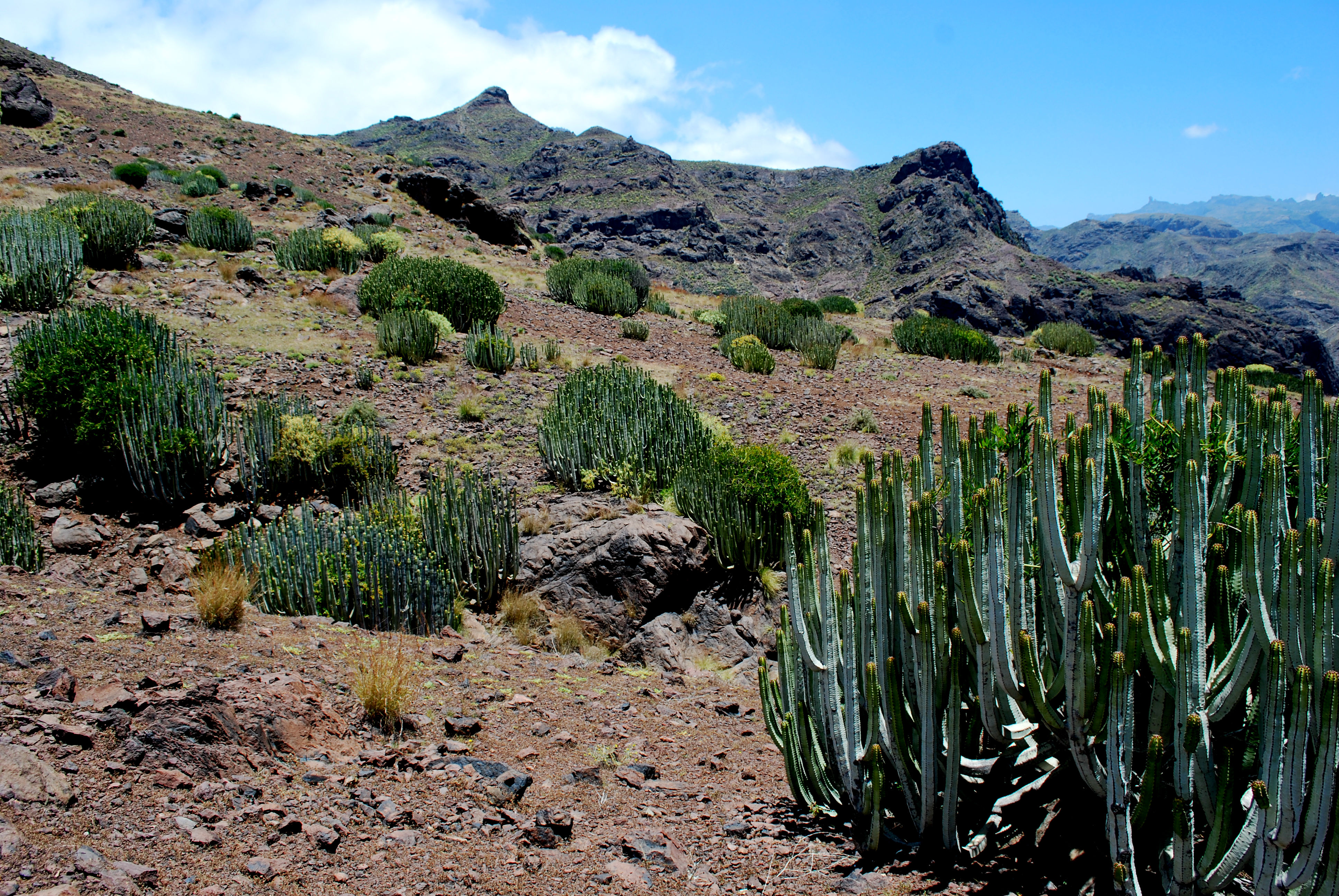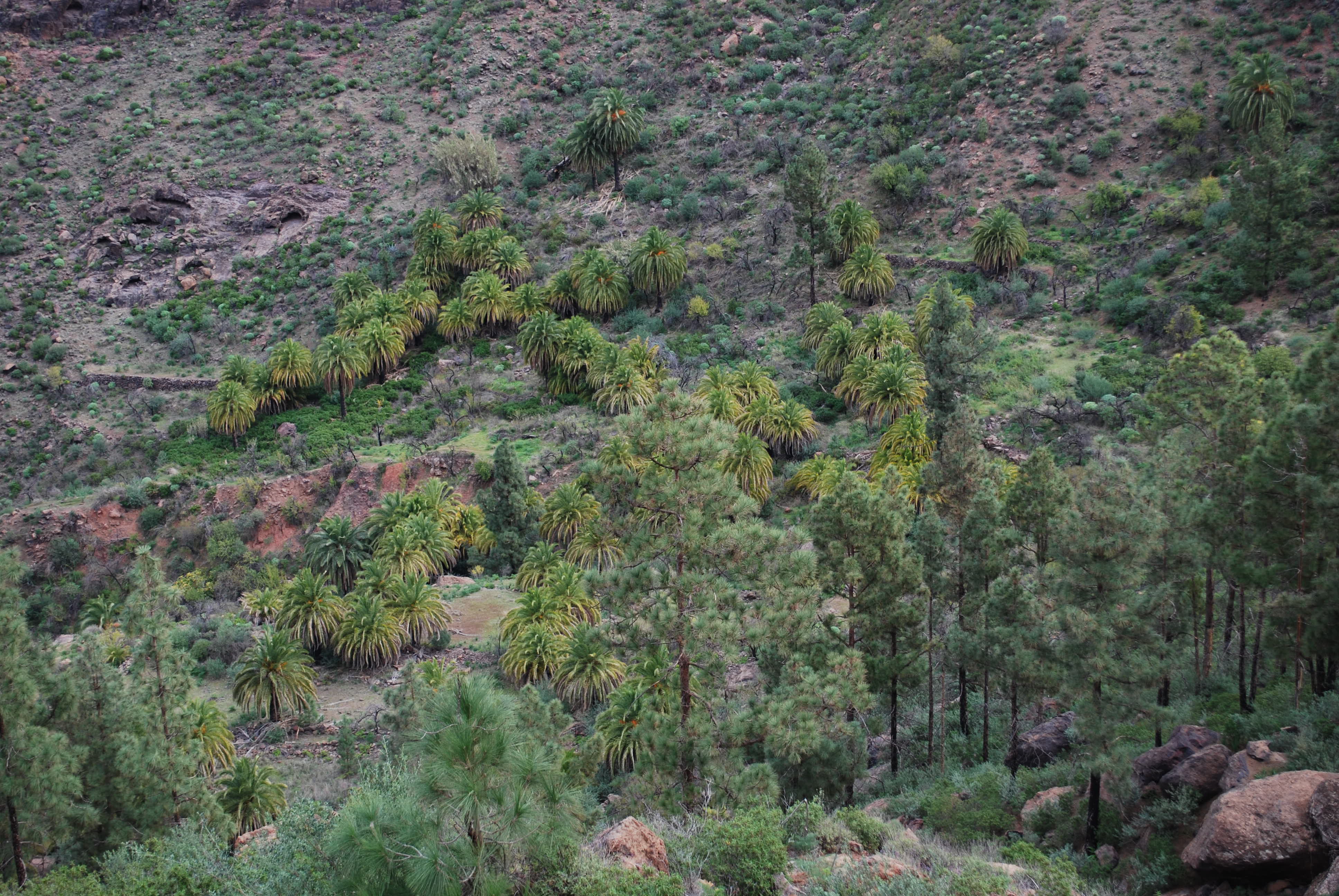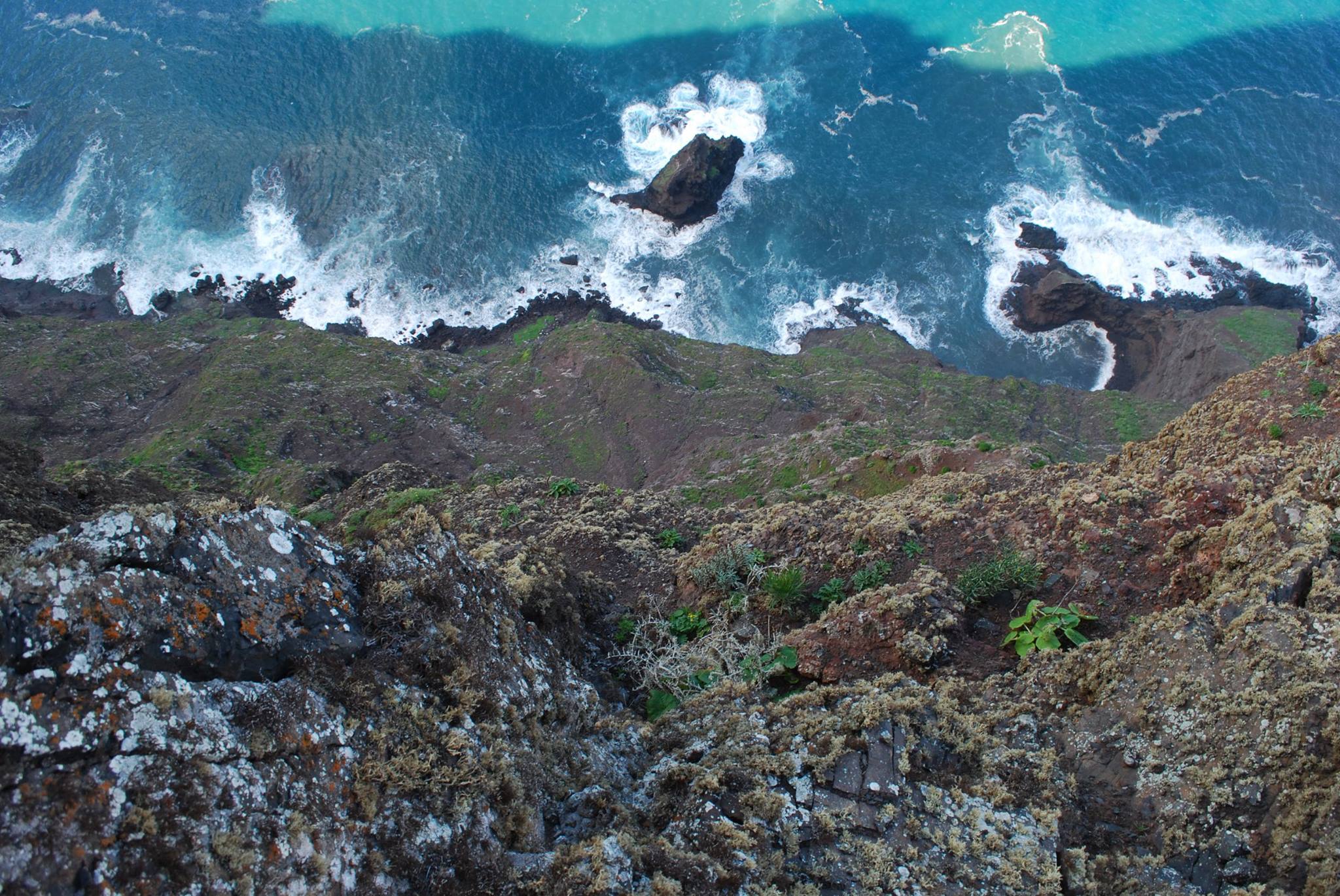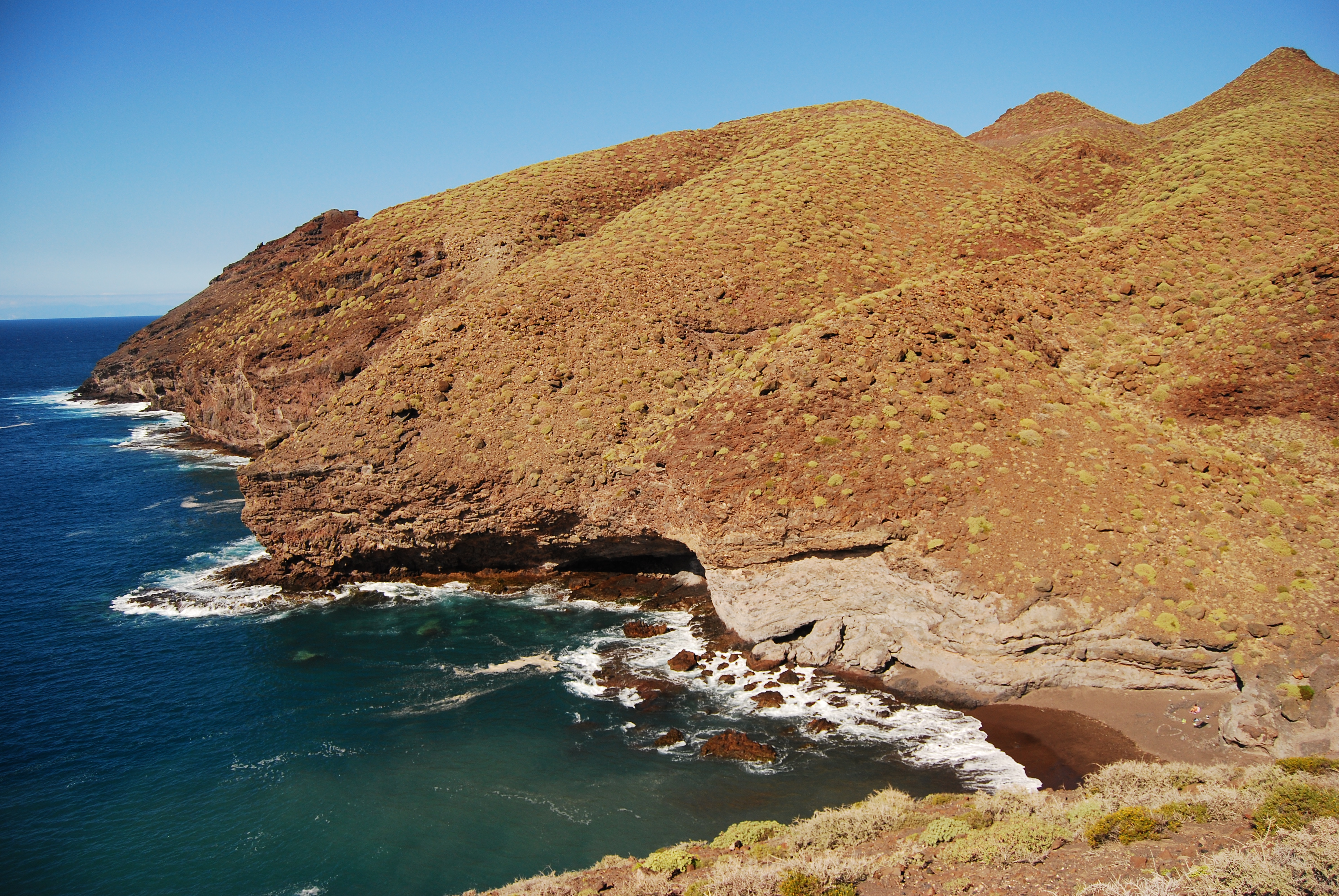Six spaces of floral interest not to be missed
Inagua Pine Forest
This pine forest is a beautiful example of Canary Island pine forest and, without any doubt, the best representation of a pine forest on dry terrain existing in the Canaries. It is a wooded area in a good state of conservation, of not inconsiderable botanical importance. Both the forest and its immediate surroundings provide refuge for a huge list of species native to Gran Canaria, some only to be found here.
Of them all, the following stand out for their rarity: the yellow jarillas (Helianthemum bistropogophyllum and inaguae), the only dragon tree of Gran Canaria located in the municipality (Dracaena tamaranae) or the evergreen pine (Limonium vigaroense.)
The Artejévez Mastic Tree Grove
The Hoya de Artejévez, in the foothills of Los Cedros mountain, shelters the largest mastic tree grove still present on the Canaries. This redoubt of biodiversity, a good example of thermophilic – heat loving – forest, allows us to imagine the vegetation that dominated most of the valleys’ dales and slopes before the process of deforestation to which humans submitted it.
Moreover, in this leafy mastic tree grove, you can also enjoy slender Canary Island palm trees, wild olive trees, guaydil trees and an interesting group of plants with fleshy fruit, which include, for example, the tasaigo (Rhamnus crenulata) and the yerbamora. In short, an extensive list of species exclusive to Macaronesia, the Canary Islands or Gran Canaria, all linked to this interesting ecosystem.
Los Hoyetes Thistle Thicket
Almost bordering the Salado basin, an extensive thicket of thistles carpets the slopes that descend from the crest of the Tirma-Azaenegue massif to the Barranco Grande. There are old specimens there that occupy a surface larger than fifty square metres. The spectacular nature of the plants, added to the beauty of the panoramic views of La Caldera make this a magical place.
An exclusive corner to enjoy what is possibly the most unique ecosystem of the Canaries, the succulent thicket, a peculiar set of succulent-type plants with curious adaptations that paint a truly exotic landscape.
Pino Gordo Palm Grove
Along the Pino Gordo ravine, which originates at L’inagua farm and ends in the Barranco Grande, leafy palm groves that intermingle with the pine forest dress the course of the river in green to produce one of the most exotic scenarios in the west. To the floral interest of these woods is added that of the great buttes that box in some of the sections of the ravine and that represent the best of refuges for numerous and rare stone-loving native species.
The cliffs of Pino Gordo are the refuge of some of the scarcest and threatened Gran Canaria plants, for example, the cabezote or the white tomillón (Micromeria leucantha), a taxon restricted to very specific points of the western area.
Andén Verde Cliffs
The narrow terraces of this imposing cliff area, permanently exposed to the influence of the sea, are home to a wide catalogue of plants adapted to the insistent trade winds, and to the poor quality and high salinity of its soils. This natural fortress is among the spaces that, in relation to surface area, host the greatest number of Gran Canaria native species, some only located on these shelves.
The La Aldea siempreviva (Limonium benmageci), the corazoncillo (Lotus callis viridis) or the saladillo blanco aldeano (Polycarpaea sp.) are three plants that have only been found around the imposing cliffs of western Gran Canaria.
La Punta Tabaiba Scrub
One of the most paradise-like scenarios on Gran Canaria is the one found in Punta de La Aldea. Succulent scrubland, dominated by sweet tabaibas, a member of the euphorbia family, carpets the old slopes that make up the westernmost side of the island and, next to the small cove of El Puertito, the shallows and the marine cliffs, they make an idyllic picture.
In this idyllic environment numerous bushes and shrubs, exclusive to the Macaronesian region coexist: leñas buenas, coastal siemprevivas, salados, toldas and espinos contribute colour and offer refuge and sustenance to the local fauna.

